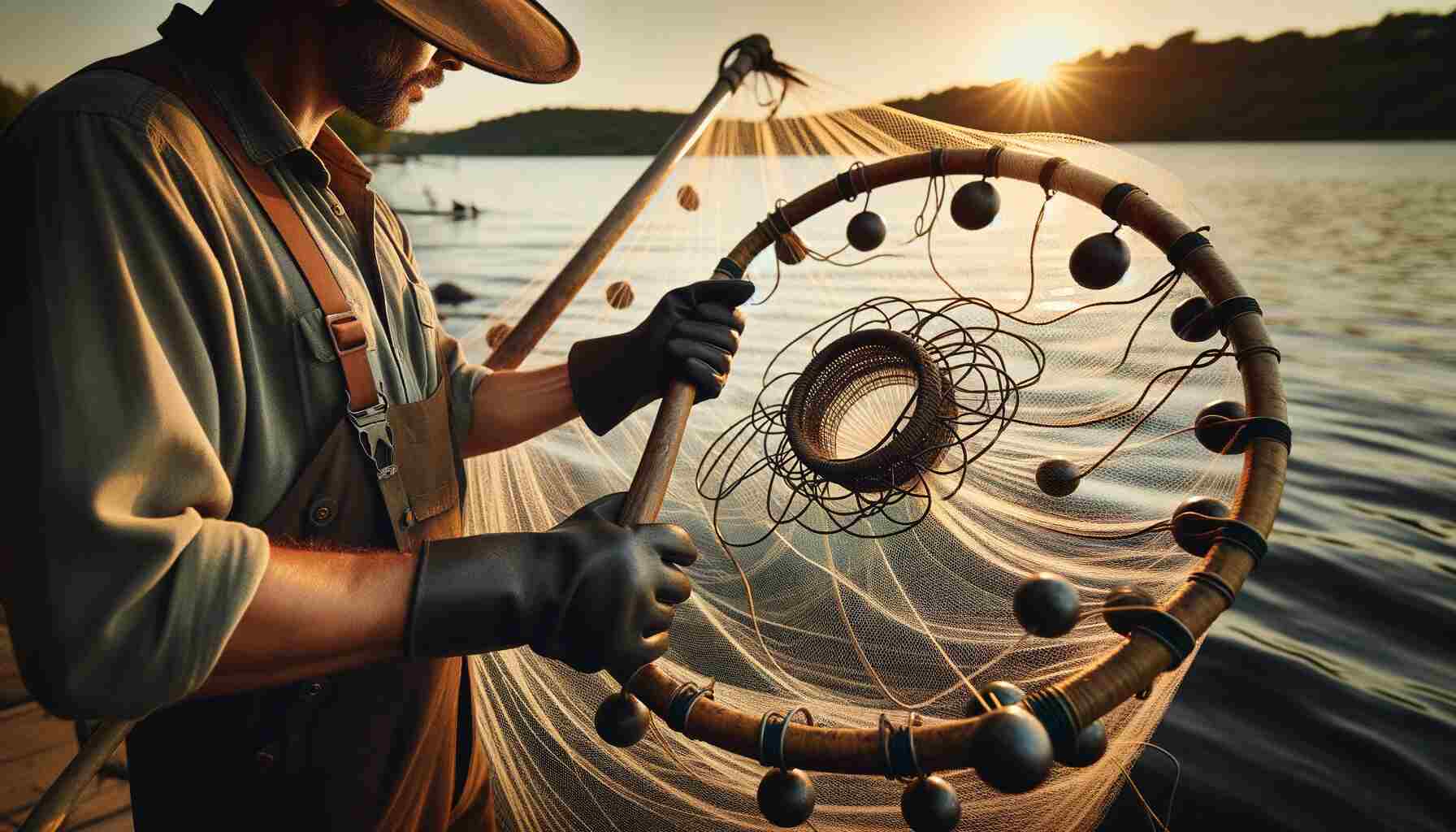Fishing is a time-honored tradition that connects people with nature and provides sustenance. One of the most effective and versatile tools in a fisherman’s arsenal is the cast net. Whether you’re a seasoned angler or a beginner, learning how to throw a cast net can significantly enhance your fishing experience. Here’s a step-by-step process of throwing a cast net, ensuring that you’re well-prepared to catch a variety of fish in different environments.
Understanding the Cast Net
Before diving into the mechanics of throwing a cast net, it’s essential to understand what a cast net is and how it works. A cast net is a circular net with weights along its outer edge and a series of connected lines converging at a central point known as the horn. The mesh size, weight, and diameter of the net can vary, depending on your intended catch and the fishing conditions.
The principle behind a cast net is simple but effective. When properly thrown, the net spreads out underwater, forming a large circle that surrounds the fish. The weights along the outer edge of the net sink quickly, while the rest of the net fans out, creating a trap for the fish. The central horn of the net is attached to a rope, allowing the angler to gather the net and retrieve the catch.
Now that we have a basic understanding of what a cast net is, let’s delve into the step-by-step process of how to throw a cast net effectively.

Step 1: Choose the Right Cast Net
Selecting the appropriate cast net is crucial for successful fishing. The choice of net depends on the type of fish you’re targeting and the specific fishing conditions. Here are some factors to consider:
- Mesh Size: The size of the mesh determines the size of the fish you can catch. Smaller mesh sizes are suitable for catching baitfish, while larger mesh sizes are better for larger game fish.
- Net Diameter: Choose a net diameter that matches the size of your fishing area. Smaller nets are more manageable in tight spaces, while larger nets cover a broader area.
- Weight: Cast nets come with varying weights, typically measured in pounds per radius foot. Heavier nets sink faster, making them suitable for deeper waters or fast-moving currents.
- Material: Cast nets can be made from various materials, such as monofilament or nylon. Monofilament nets are durable and easy to repair, while nylon nets are softer and less likely to spook fish.
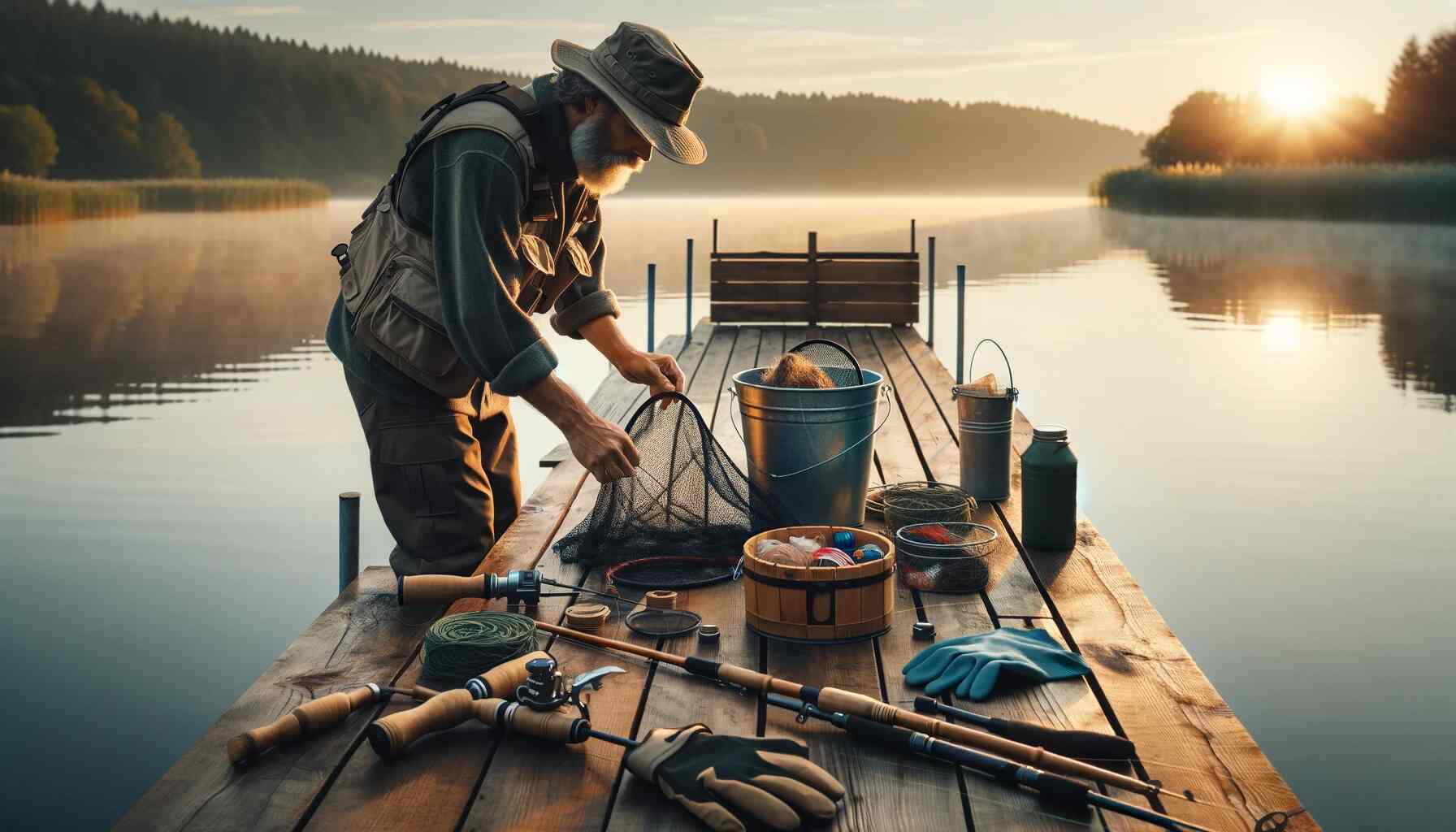
Step 2: Prepare Your Equipment
Once you’ve chosen the right cast net, it’s time to prepare your equipment. Here’s what you’ll need:
- Cast Net: Your selected cast net, matches the fish species and fishing conditions.
- Gloves: A pair of gloves will protect your hands from abrasions and ensure a better grip on the net.
- Bucket: A bucket or container to hold your catch.
- Bait: If you’re using live bait, have it ready and accessible.
- Suitable Clothing: Wear appropriate clothing for the weather and fishing environment, including a hat, sunglasses, and sunscreen.
- A Sturdy Rope or Line: You’ll need a rope or line to attach to the horn of the cast net for throwing and retrieval.

Step 3: Find the Right Location
Choosing the right location is essential for a successful cast net throw. Look for areas with the following characteristics:
- Shallow Waters: Shallow waters are generally better for beginners as they provide a more controlled environment for practicing cast net throws.
- Baitfish Activity: If you’re targeting baitfish, observe the water for signs of baitfish schools or other fish activity.
- Structure: Fish tend to gather around structures like rocks, piers, or vegetation. These areas can be excellent places to throw your cast net.
- Tides and Currents: Pay attention to the tide and current conditions, as they can affect the movement of fish. Slack tides are often ideal for cast netting.

Step 4: Learn the Basic Cast Net Throwing Technique
Throwing a cast net might seem intimidating at first, but with practice, you can master the technique. Here’s a step-by-step guide to the basic cast net throwing technique:
- Hold the Net: Begin by holding the cast net with one hand on the horn and the other hand on the lead line, which is a section of the net that runs along the bottom edge.
- Prepare to Load: Lay the net flat on the ground and gather the lead line into your throwing hand. Ensure that the net is untangled and that the weights are evenly distributed around the perimeter.
- Gather the Net: With your throwing hand, gather the net in a bunch near the horn, holding it loosely. The lead line should be hanging down from your hand, forming a loop.
- Position Yourself: Stand with your feet shoulder-width apart, facing the water. Your throwing hand should be in front of you, and your free hand should hold the excess netting.
- Load the Net: Swing the gathered net in your throwing hand in a circular motion behind you, loading the net.
- Throw the Net: In one fluid motion, release the gathered net and throw it towards your target area on the water’s surface. As you release the net, step forward and open your throwing hand, allowing the net to spread out in a circular shape.
- Follow Through: As the net spreads in the air, take a step back and lower your throwing hand. This action helps the net open fully underwater, creating a wide circle.
- Gather the Rope: After the net has sunk to the desired depth, pull on the rope attached to the horn to close the net and trap the fish inside.
- Retrieve the Net: Slowly pull the rope and gather the net back towards you. Be patient, as this process may take some time, especially if you’ve caught a substantial amount of fish.
- Collect Your Catch: Once the net is fully retrieved, carefully scoop up the fish from the water and place them in your bucket or container.
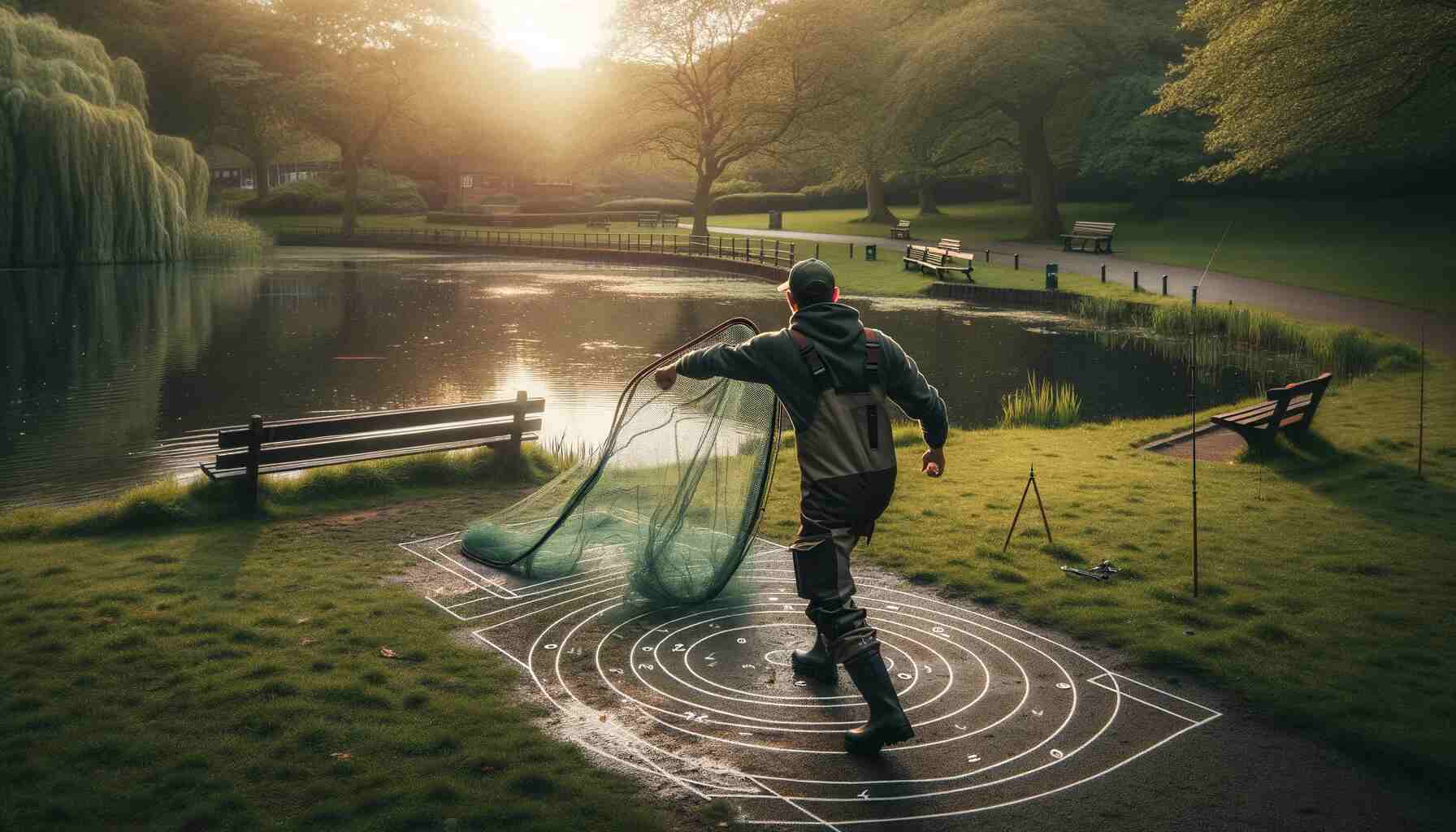
Step 5: Practice and Improve Your Technique
Mastering the cast net throwing technique takes practice and patience. Here are some tips to help you improve your skills:
- Practice on Land: Before heading to the water, practice your casting technique on dry land. This will help you get a feel for the net’s weight and how it opens.
- Watch Video Tutorials: There are plenty of online tutorials and instructional videos that can provide visual guidance and tips for cast net throwing.
- Seek Guidance: If possible, learn from an experienced caster. They can offer personalized advice and feedback to help you improve quickly.
- Experiment with Different Nets: Try different cast nets with varying weights, mesh sizes, and materials to see which one suits your style and target species best.
- Be Patient: Don’t get discouraged if you don’t catch fish immediately. Like any skill, casting a net takes time to perfect.

Step 6: Comply with Local Regulations
Before you head out to fish with your cast net, make sure to familiarize yourself with local fishing regulations and restrictions. Many areas have specific rules regarding the use of cast nets, including mesh size limitations, catch limits, and designated fishing zones. Ignoring these regulations can result in fines or penalties, so always fish responsibly and within the law.
Advanced Cast Net Throwing Techniques
Once you’ve mastered the basic cast net throwing technique, you can explore some advanced techniques to improve your catch rate and efficiency. Here are a few advanced strategies:
- The Pancake Throw: This technique involves throwing the cast net parallel to the water’s surface, creating a wide spread. It’s particularly useful when targeting baitfish near the surface.
- The Backhand Cast: The backhand cast is a variation of the standard cast net throw. It’s useful when you need to throw the net in a tight space or around obstacles. Practice this technique to become more versatile in your casting abilities.
- Double-Loading: Some experienced casters double-load their nets by folding them in half before the throw. This creates a denser net with a larger spread, increasing the chances of catching more fish.
- The No-Look Cast: This advanced technique involves throwing the net without looking at the water. It requires a deep understanding of the net’s weight and your surroundings and can be highly effective when targeting fish hiding near structures.
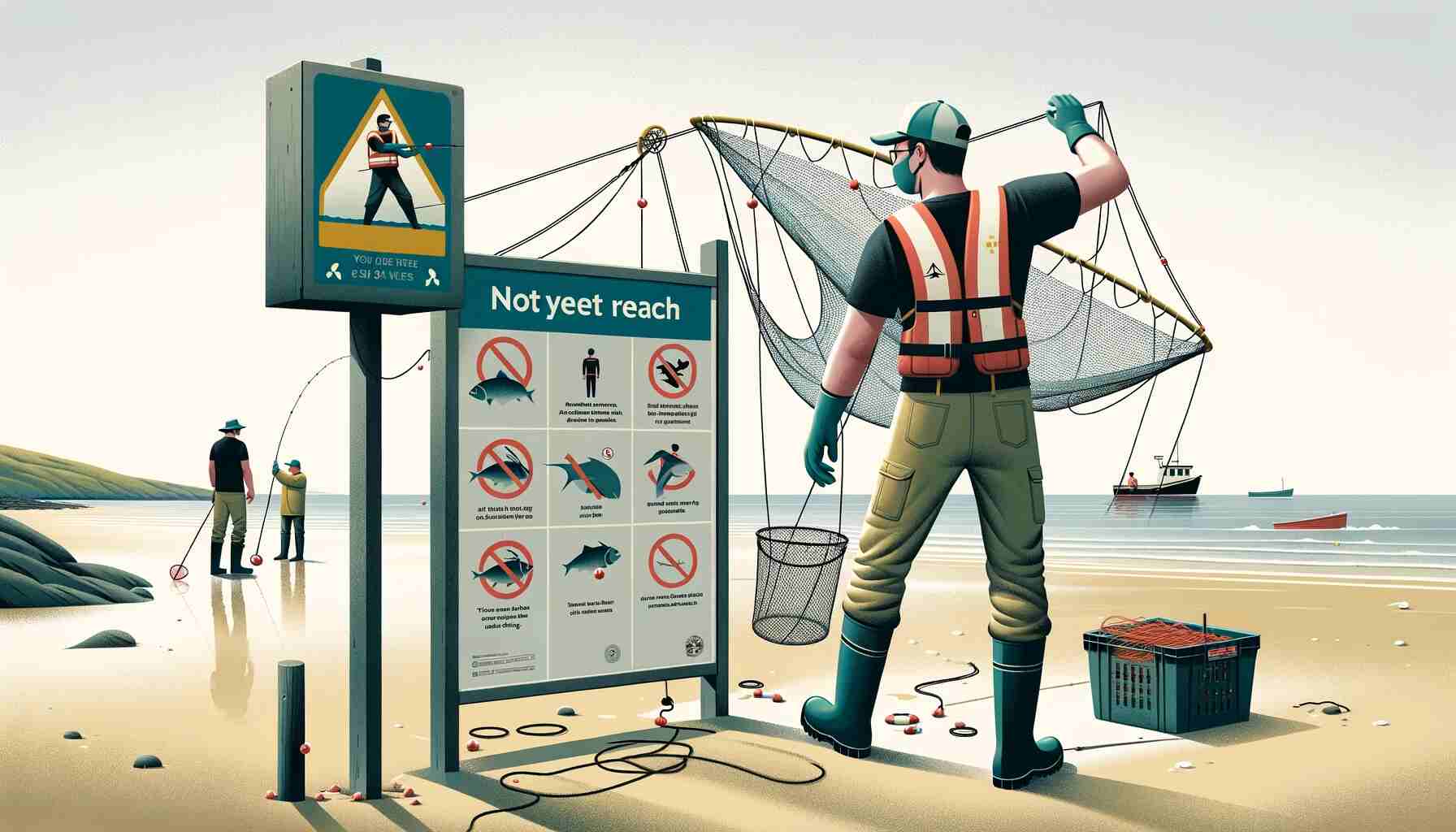
Safety Tips for Cast Net Throwing
Safety should always be a top priority when throwing a cast net. Here are some essential safety tips to keep in mind:
- Be Aware of Your Surroundings: Always be mindful of your surroundings, including other fishermen, swimmers, and boaters. Make sure there’s enough space to cast your net safely.
- Watch Your Step: When casting a net in water, the ground can be uneven and slippery. Watch your step to avoid tripping or falling.
- Use Gloves: Protect your hands from abrasions and cuts by wearing gloves while handling the net and rope.
- Mind the Wind: Strong winds can affect the trajectory of your cast net throw. Adjust your technique and aim accordingly to compensate for wind conditions.
- Keep the Rope Tangle-Free: Ensure that the rope attached to the horn of the net is tangle-free and easily accessible. A tangled rope can lead to accidents or missed catches.
- Practice Rescue Techniques: If you accidentally entangle the net underwater or on underwater structures, know how to safely retrieve it without putting yourself at risk.
- Respect Wildlife: Handle caught fish with care and release any unwanted or undersized fish back into the water. Always follow catch-and-release guidelines and respect local wildlife.

Caring for Your Cast Net
To ensure the longevity and effectiveness of your cast net, it’s essential to properly care for it. Here are some maintenance tips:
- Rinse After Use: After each fishing trip, rinse the net thoroughly with freshwater to remove salt, sand, and debris. This helps prevent premature wear and tear.
- Dry Properly: Allow the net to dry completely before storing it. Avoid direct sunlight, as prolonged exposure can weaken the net material.
- Repair Any Damage: Regularly inspect your cast net for damage, such as torn mesh or frayed lines. Repair any issues promptly to maintain its functionality.
- Store Carefully: Store your cast net in a cool, dry place to prevent mold and mildew growth. Keep it away from pests that may chew through the mesh.
- Lubricate the Horn: Apply a lubricant to the horn’s pivot point to keep it moving smoothly. This prevents rust and ensures easy deployment and retrieval.
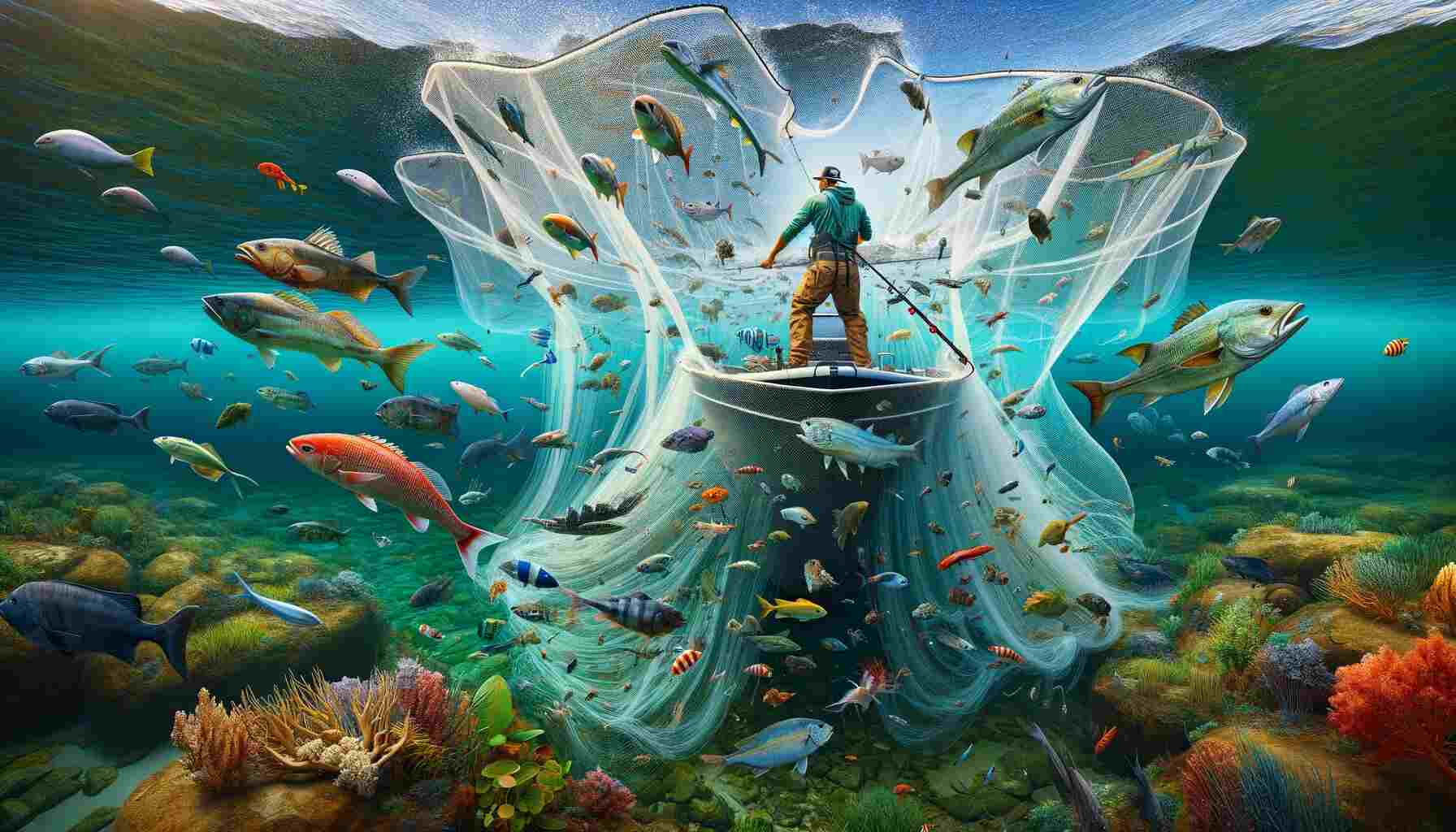
Targeting Different Species with a Cast Net
Cast nets offer versatility in catching a wide range of fish species, from baitfish to larger game fish. Here are some tips for targeting specific species:
- Baitfish: Use smaller mesh sizes, such as 3/8 inch to 1/2 inch, to catch baitfish like mullet, shad, or minnows. Look for baitfish schools near the surface, especially during low-light periods.
- Shrimp and Crabs: Employ cast nets to catch shrimp and crabs in shallow waters near marshes, jetties, or rocky areas.
- Mullet: Target mullet, commonly found in estuaries and coastal areas, with a larger mesh size during their feeding activity.
- Menhaden: Pursue menhaden, also called pogies or bunker, for bait using a larger mesh size in areas where they congregate.
- Game Fish: Keep an eye out for schools of game fish near the surface; cast nets can effectively catch them when schooling.
- Catfish and Carp: In rivers and lakes, use larger mesh sizes to target catfish and carp, particularly where they feed near the surface.
FAQs
Frequently Asked Questions About Cast Net Fishing
Q: What size cast net should I use?
A: The size of the cast net you should use depends on the type of fish you’re targeting and the depth of the water. Generally, a net between 6-8 feet is suitable for beginners and can be used in various environments.
Q: How do I choose the right mesh size?
A: Smaller mesh sizes (1/4 inch to 3/8 inch) are great for smaller bait like minnows, while larger meshes (1/2 inch or more) are better for bigger bait and game fish. The key is to prevent the target fish from gilling (getting stuck in the net).
Q: Is it legal to use a cast net in my area?
A: Laws vary by location. Always check local regulations concerning the use of cast nets, permissible mesh sizes, and where you can legally fish with them.
Q: How do I throw a cast net?
A: Throwing a cast net involves holding the net properly, coiling the handline, gathering the net in your hand, and then swinging and releasing it in a way that makes it open in a circle. It’s best learned through practice and possibly with the help of tutorials or an experienced person.
Q: How do I care for my cast net?
A: Rinse your net with fresh water after each use to remove salt and debris. Inspect it regularly for tears and repair them promptly. Store it in a cool, dry place away from direct sunlight.
Q: Can cast nets harm fish?
A: If used responsibly, cast nets are a sustainable way to catch live bait and certain fish. Always release unwanted catch as quickly and gently as possible.
Q: What should I do if my cast net gets snagged or torn?
A: If your net gets snagged, gently pull and maneuver it to release it without tearing. If it gets torn, use a net needle and twine to repair it, or take it to a professional if the damage is extensive.
Q: How long will my cast net last?
A: With proper care, a good quality cast net can last several years. The lifespan will depend on how frequently you use it and how well you maintain it.
Q: Are there different types of cast nets for different environments?
A: Yes, there are various types of cast nets designed for different environments and species. For example, nets with heavier weights sink faster and are better for deeper water, while shallower waters might require lighter nets.
Q: Can I practice cast netting on land?
A: Yes, practicing on a soft grassy area can help you get the feel for the throw without causing wear and tear on your net. Just ensure the net is clean and free from debris before using it in the water again.
Conclusion
Casting a net may appear challenging, but it’s quite straightforward. Select a high-quality net of appropriate size and design for the water you’re fishing and the species you’re targeting. Familiarize yourself with the local fishing rules and spend ample time practicing on the water.
Throwing a cast net is a valuable skill for any angler, offering a versatile and effective way to catch various fish species. With the right equipment, techniques, and practice, you can become proficient in using a cast net to target baitfish or larger game fish in a short period.
We hope all the images are enough to learn this skill if not let us know and we will be happy to create a video.

